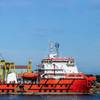The Dash for Gas
The U.S. has been here before. The gas balloon expanded rapidly and deflated just as quickly in the late 80's leaving flat gas prices and minor imports for over a decade. Until 1996 Algeria was almost the sole supplier of LNG to the U.S. Demand has picked up considerably since and recently spot cargoes have arrived from Australia, Abu Dhabi, Qatar, Malaysia, Trinidad and Nigeria. U.S. energy demand outstripped supply in the winter of 2000/2001 causing prices to rise dramatically - many players decided LNG is the green energy fuel of choice and over twenty LNG import projects have been proposed for the U.S. alone, to mention but a few :
• Pipe gas from mid-Alaska to West Coast and ship to California.
• Pipe gas from the Barents Sea to Norway and thence by ship to the US East coast.
• Pipe gas from Bolivia to Chile and ship to California and Mexico
• Ship gas from North-West/Northern Australia/Timor /Indonesia/Bolivia to California and Mexico
• Ship gas to the Bahamas and pipe to Florida
• Ship gas from Trinidad, Venezuela and Angola into the US Gulf and ashore via pipeline
• Re-opening of mothballed LNG plant (Cove Point and Elba Island)) - now complete.
• Expansion of existing LNG plant (Everett, Lake Charles and Cove Point).
Those will succeed where the long haul is the objective. Potentially, if most of these projects succeed, up to 70 ships will be ordered for delivery in the period 2005 - 2011. Projects in other countries are anticipated to require about 30 ships over the same period making the US a very important market.
Forecast demand for LNG ships showing the annual number of ships for optimistic (100 percent utilization within 3 years and ship replacement at 30 years), realistic (50 percent utilization within three years and ship scrapping at 35 years) and pessimistic (25 percent capacity utilization and ship replacement at 40 years) scenarios together with the current confirmed newbuilding deliveries destined for trade into the U.S. It can be seen that between now and 2003 the tight ship supply market will remain and in 2004 we may even see ships without cargoes but this will only be a short term dip, provided that the project completions are not delayed.
The current (Feb. 14, 2002) world fleet of LNG ships including only confirmed orders stands at 177 ships with 49 ships on order. The majority of which (32) are building in Korea with twelve in Japan and five in Spain.
There is unlikely to be any bottleneck in delivery of these ships since the world capacity is in the region of 28 ships per year.
An El Paso spokesperson was quoted recently as saying "LNG will be among the fastest growing segments of the energy industry, with a 10-15 percent annual growth rate over the next decade." U.S. natural gas demand is forecast to increase by more than 50 percent over the next 10 years, pushing the gas share of the total energy mix up to 36 percent from 24 percent today.
The recent State of the Union address made it clear that seeking independence from overseas energy supplies is a priority and the recent terrorist attacks will no doubt affect plans for new LNG facilities — the question is how much will this restrict commercial development which is primarily sourced by private capital, albeit with government approval?
The energy needs of both the developed and developing world will continue to grow — the issues are of course central, at what pace will this continue? What share will LNG capture and who will ship the LNG ? In the authors view the short term dip we are seeing may quite rightly worry the speculators, however, there is a substantial degree of solid long-term business both in progress and still to be secured in the dash for gas.













